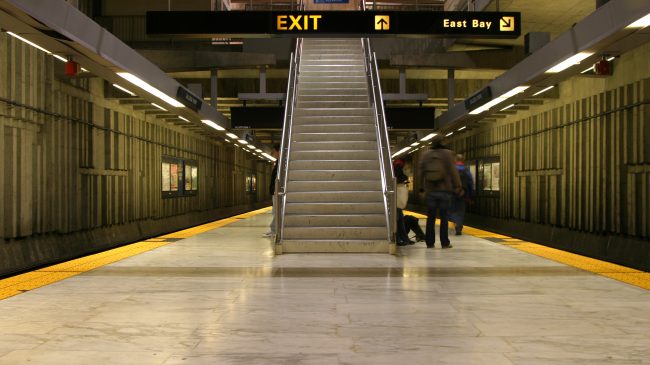Anyone hoping that a $9 rush-hour toll on the Bay Bridge will fix BART and alleviate commuting misery should take a trip to the Big Apple.
It now costs $12.50 to cross the Hudson River into Manhattan ($15.00 if you don’t have New York’s FasTrak equivalent), but public transit is deteriorating. Subways are crowded and frequently delayed; service disruptions — both scheduled and unscheduled — are common.
Meanwhile, Penn Station — the city’s primary intermodal transportation facility — is the “Most Awful Transit Center in America,” according to a recent Bloomberg story. Not only is the station itself unpleasant, but the 107-year-old Hudson River tunnels serving the facility are severely corroded and in danger of collapse.
Throwing money at public transportation infrastructure has been a poor bet in the United States for many years now. While government-directed projects gave us numerous engineering marvels at low cost in the 1930s, the public sector no longer provides value for transportation money.
The Bay Bridge replacement (costing $6 billion and opening years late) and San Francisco’s Central Subway (with its nearly $2 billion price tag and uncertain opening date) are just local examples of a nationwide phenomenon.
New York recently opened three new subway stations along Second Avenue. The project took a decade to complete and cost $5 billion. According to a recent New York Times exposé, the Second Avenue Subway’s cost per mile was more than five times that of a similar project in Paris. Before that, Boston’s “Big Dig” — a major highway rerouting project — was completed nine years late and at a cost almost triple the original estimate.
Given these results, voters throughout the Bay Area should take a skeptical view of any promises made in exchange for the three $1 toll increases being proposed as Regional Measure 3 on the June ballot. What assurances will we have that the proposed projects will be completed in a timely and cost-efficient manner? And how do we know that the extra money won’t be siphoned off to pay for excessive operating costs, including employee retirement benefits?
We already know that these benefits are both sizable and growing. According to CalPERS actuarial reports, BART pension contributions are projected to skyrocket from $61 million in the current fiscal year to $126 million in 2024-25.
BART also incurred $30 million in Other Postemployment Benefits last fiscal year, which include medical coverage for retirees and surviving spouses, survivor dental and vision benefits and retiree life insurance. Most employees become eligible for these benefits after working just five years and reaching age 50 — a level of generosity almost unheard of in the private sector.
If BART and other public entities can’t be trusted with more toll- and taxpayer money, how can we provide the increased transportation capacity that East Bay commuters need? Once again, the New York area provides some insight.
New York Waterway, a private company, offers high-speed ferry service from 10 New Jersey locations to three destinations in Manhattan along with connecting buses. Fares are expensive, ranging up to $13 for one-way service between Weehawken, N.J., and Wall Street, but the service is reliable and comfortable. In the Bay Area, we could invite private operators to offer premium bus/ferry services at unregulated prices. While some might sniff at such elitism, each commuter taking these services means one less car on the Bay Bridge or one less standee on an overcrowded BART train.
Longer term, we need another transit tube under the bay. But rather than gamble taxpayer money, we should seek a private firm to build and operate the system — at least for an initial period — and charge market prices to recoup its costs.

